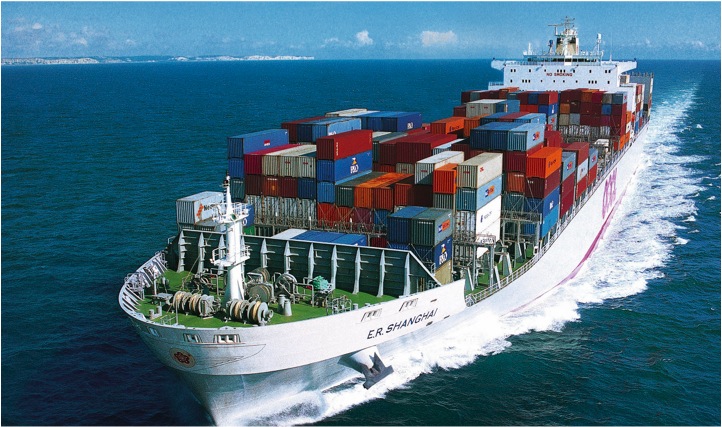Paul Bugden, Bugden + Co., London
Waterdance Limited v Kingston Marine Services Limited [2014] EWHC 224 (TCC) Stuart-Smith J.
The Joy of Ladram was a Beam Trawler owned by the Claimants engaged in commercial fishing. She suffered damage to her engine caused by negligence or breach of contract on the part of the Defendant.
The value of the Vessel’s hull and machinery immediately before the damage occurred was in the range £647,000 to £680,000. The damage to the Vessel would have cost £435,000 to repair. In the event, the Claimant decommissioned the Vessel without having carried out the repairs pursuant to a Governmental scheme which was introduced after the damage had been incurred; the purpose of which was to reduce capacity in the trawler fleet fishing by securing the permanent withdrawal of vessels from the fishing fleet. Under the scheme, the Claimant offered to decommission the Vessel in return for a grant payment of £1,119,000. The offer was accepted and the grant was duly received.
The Claimant claimed damages based on the diminution in value of the Vessel. The Defendant contended that no damages were payable for diminution in value because the Claimant had avoided or mitigated any loss it may have suffered by reason of the physical damage by decommissioning the Vessel for a sum equal to that which would have been obtained irrespective of the physical damage.
The authorities established that the reasonable cost of repairing a damaged chattel is prima facie evidence of the diminution in value caused by the damage, whether or not it is in fact repaired. The correct jurisprudential analysis of a claim for diminution in value, even if it is measured by the reasonable cost of repairs, is that it is a claim for general damages, not one for special damages. The diminution in value claim should therefore be pleaded as a claim for general damages. Documents such as an invoice for the cost of the repairs undertaken are no more than evidence of the diminution in value suffered by the chattel as a result of the negligence of the wrongdoer which can be used to make good the claim. Strictly speaking, the cost of the repairs is not itself the loss suffered. In Coles v Hetherton the law was summarised as follows:
(1) Where a chattel is damaged by the negligence of another that loss (the “direct” loss) is suffered as soon as the chattel is damaged. (2) The proper measure of that loss is the diminution in value that the chattel has suffered as a result of the negligence of the defendant. (3) If the chattel can be economically repaired, the claimant is entitled to have it repaired at the cost of the wrongdoer, although the claimant is not obliged to repair the chattel to recover the direct loss suffered. (4) Events occurring after the infliction of the damage are irrelevant to calculating the diminution in value measure of damages. Thus, subsequent destruction of the chattel or a decision to delay repairs, or an ability to have the repairs done at less than cost or for nothing will not prevent the claimant from recovering the diminution in value of the chattel that has been caused by the negligence of the tortfeasor. (5) Generally, the practical way that the courts have calculated this diminution in value is to ask how much would be the reasonable cost of repair so as to put the chattel back in the state it was in before it was damaged. Only if the sum claimed appears to be clearly excessive will the court be justified in investigating whether that sum exceeds the cost that the claimant would have incurred in having the repairs carried out by a reputable repairer.
On the authorities the Claimant accepted that diminution in value is the touchstone, with the agreed cost of repairs being the prima facie measure of loss; and the Defendant accepted that the burden rested upon it to prove that there was no diminution in value despite that prima facie evidence. The Defendant did not suggest that the cost of repairs was “clearly excessive” and there was no material upon which such a finding could be made. The Defendant as such had to show that circumstances existed at the date of the infliction of damage as a result of which the physical damage to the Vessel caused no diminution in its value to the Claimant on that date.
Once it was concluded on the evidence, as it was, that the Defendant has failed to show that no diminution of value occurred, the prima facie measure of damages was the reasonable cost of repairs and as no alternative figure had been advanced by the Defendant and no reasons based on either fact or principle for adopting a different figure presented themselves the court concluded that the Claimant suffered a direct loss at the time of the damage, the correct measure for which is the reasonable cost of repairs, namely £435,000.
The result of course may possibly be different in other cases on different facts; as say where say the damage suffered has no effect at all on the use or value of the vessel and where she is sold in an unrepaired state.
Furthermore other principles may pertain where the claim is say for delivery up by carrier of goods in damaged condition or say for damage not to a capital asset but mere stock in trade; in which cases the starting point for assessment of the loss may not be the cost of their repair but rather the diminution in their market value.

